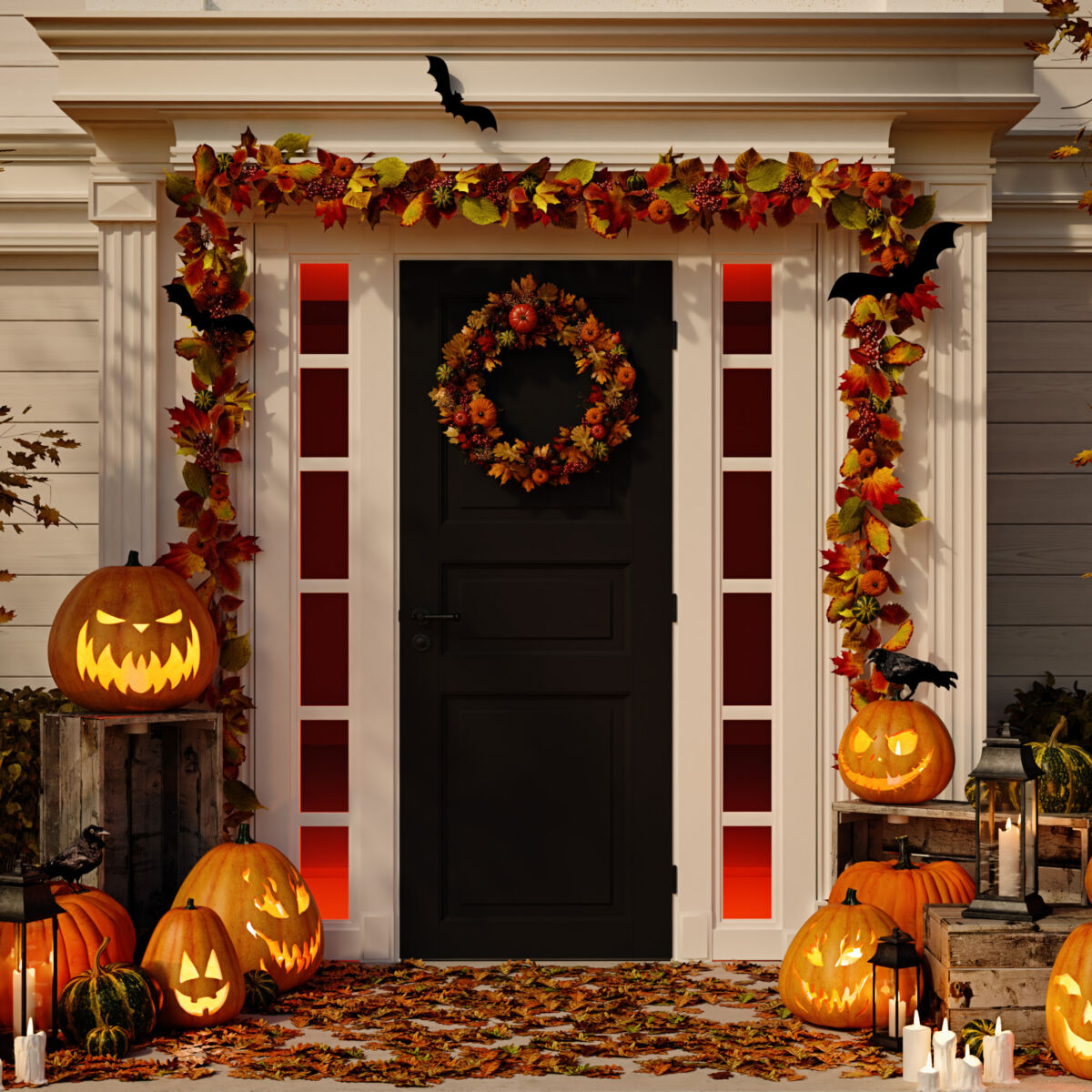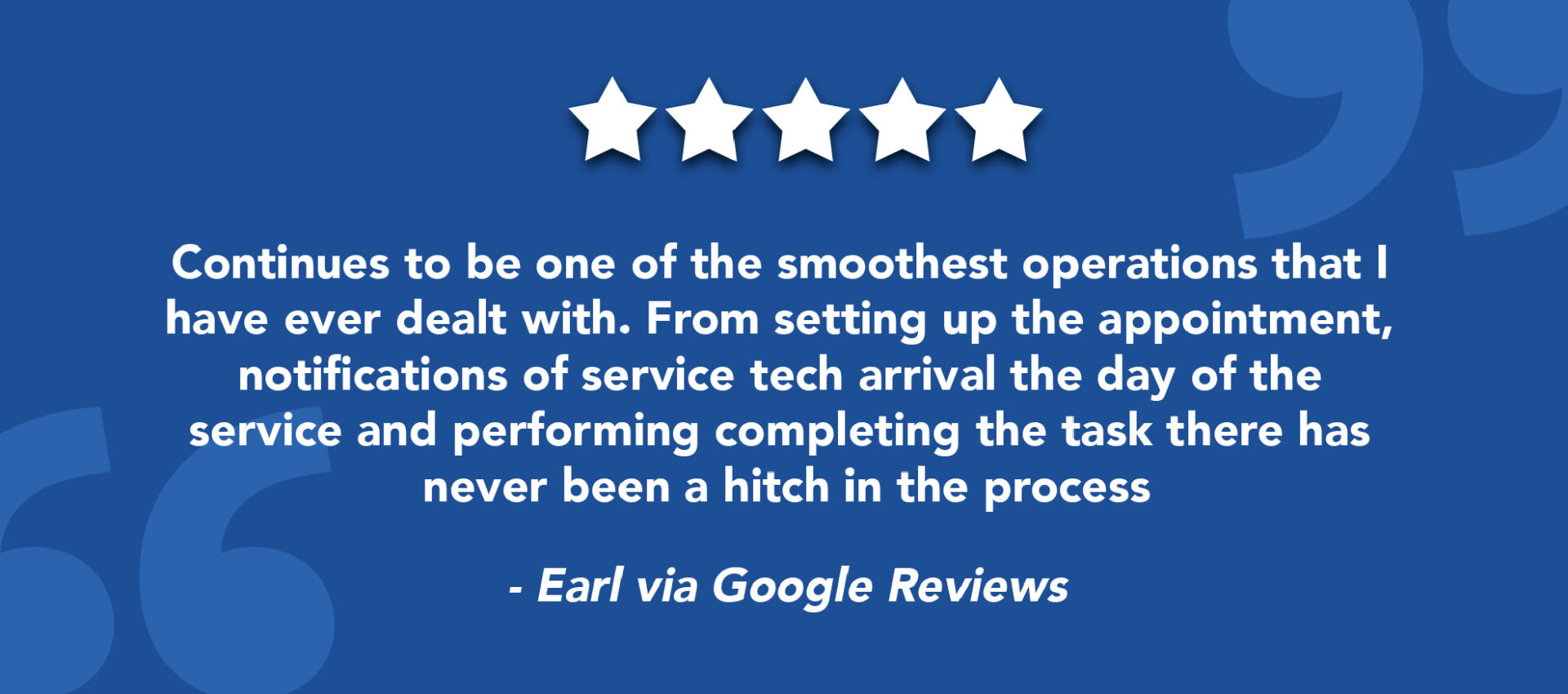
Can you believe it’s almost Halloween? This fall, make sure your home is prepared for the coming cold with these home maintenance tips.
Get started now so these essential indoor fall maintenance tasks don’t get lost in the holiday hullabaloo.
8 Essential Indoor Fall Maintenance Tasks
1. Replace your furnace filter
As a general rule, check you filter every 30 days and wait no longer than 90 days to change or clean it. Have extra filters on hand for when you need to change it next. We recommend writing the date of replacement on the filter itself so you know how long it’s been since the last replacement and setting monthly reminders so you don’t forget to check.
Learn how to choose the best HVAC filter.
2. Schedule a professional heating tune-up
To ensure your system is fully functioning and as efficient as possible, make sure you schedule heating maintenance from a qualified technician. Professional heating tune-ups should be scheduled every fall, while air conditioning maintenance should be done every spring.
Contact Sobieski Services today for your fall furnace pro-check! You can also sign up for the Home Care Club so you never forget to schedule this important home maintenance.
3. Use your programmable thermostat
Programmable thermostats, when used properly, will help you save money and energy. Refer to your owner’s manual to learn how to use your thermostat properly.
In addition to regular programmable thermostats, there are also smart thermostats that “learn” from your habits and schedule for increased convenience and efficiency.
Learn more about programmable and smart thermostats.
4. Test smoke and carbon monoxide alarms once a month
If you don’t have a carbon monoxide (CO) alarm, get one installed for every level of the home. According to the Centers for Disease Control and Prevention, over 300 people die from unintentional carbon monoxide poisoning every year in the United States. Additionally, make sure you have smoke alarms on every level of the home and outside each sleeping area.
Use Dust-Off or some equivalent to clean out any dust build-up in your smoke and CO detectors. As a general rule, test your smoke and CO detectors every month by holding the test button and waiting for the alarm to sound. Typically, batteries should get replaced every 6–8 months and the device itself should be replaced every 10 years, or according to manufacturer instructions.
5. Clean and check your humidifiers regularly before and during the heating season
When scheduling your annual heating tune-up, ask the company if they will do a tune-up on your whole-home humidifier. Make sure to change your humidifier from the summer to the winter setting. Remember that your water filter will need to be changed regularly. Review the manufacturer’s instructions or ask your qualified technician for more information on maintaining your humidification system.
6. Check windows and doors for leaks
If you can see daylight coming from the edges of your doors or windows, you should definitely seal those up before winter. Even small cracks and gaps can lead to significant energy loss. We recommend inspecting your home for air leaks by taking a lit incense stick or thin piece of paper and holding it up to areas around the home where you suspect a leak. If the smoke or paper begins to move, this usually indicates an air leak that should be sealed.
Use caulk and weatherstripping to seal any cracks you find. If the gap is larger than 1/4”, use expandable foam spray instead of caulk.
You can also contact your trained and licensed professionals at Sobieski to inspect your home for proper insulation and ventilation levels. If you end up making significant air sealing and energy efficiency improvements, contact a trained HVAC professional to determine if your home has enough ventilation. Yes, it is possible to have a home that is too airtight.
7. Clean and clear the area around vents and registers
Go around your home and find all of your supply and return air vents. Check under rugs and behind furniture. You want to make sure all of your air vents and registers are clean, open, and unobstructed.
While you may think it’s a good idea to close or block certain vents to help redistribute airflow to other rooms and save energy, it’s actually an ineffective and potentially damaging idea. Your HVAC and duct system was designed for a specific amount of space and airflow. By blocking one or more vents, you are increasing air pressure within the ducts that could lead to air leaks and inefficiencies. It’s best to leave all of your supply and return vents open and unobstructed.
If you want to create HVAC “zones” in your home to individually control the temperature in different parts of the house, ask Sobieski Services about your options, including duct dampers and ductless mini-split units.
8. Check your chimney and have it cleaned
If you use your fireplace in the fall and winter months, get it ready by examining the flue and damper. Make sure it opens and closes smoothly and creates a firm seal. If you notice a lot of creosote and ash buildup, hire a professional chimney sweep.
Creosote buildup in your chimney can cause ventilation problems and even a fire hazard. When you call Sobieski Services for a heating tune-up, we inspect your flue and chimney for safe operation.
As a general rule, you want to hire a professional chimney cleaner every 3 years or so. Keep in mind that the more you use your fireplace, the more frequently you will need to schedule chimney cleanings.
This fall, make sure you are taking all the necessary steps to keep your home and heating system working safely and efficiently.


Poor indoor air quality (IAQ) is most evident during the winter months. Due to the low humidity, our nasal passages dry out and are more susceptible to the airborne contaminants in our home. This results in increased rates of sickness and respiratory problems.
Here’s how to improve your indoor air quality for winter:
1. Exhaust Fans
The bathrooms and kitchens need working exhaust fans to expel unwanted moisture. When moisture builds up in these rooms, wallpaper and paint can peel, and rust, mold, and mildew will develop.
Ventilation is increasingly important as homes get more and more insulated. The V in HVAC stands for “ventilation” for a reason. The purpose of ventilation is to get rid of the odors, chemicals, pollutants, and humidity that gets trapped inside of the home.
In addition to ventilating your fuel-burning appliances, it’s also important to provide general ventilation for the rest of the home. A long time ago, homes didn’t need to worry too much about ventilation since there were so many gaps, cracks, and holes in the building’s shell. Now, with increasingly tight homes and building materials that result in offgassing of volatile organic compounds (VOCs) and other chemicals, mechanical ventilation is becoming more and more necessary.
2. Supply-Only Ventilators
Exhaust fans are a great way to dispel air outdoors, but as the name implies, they only exhaust the indoor air, they don’t bring fresh air indoors. For that, you will want a supply-only ventilation system. As with other mechanical ventilation system, this is best left to the professionals.
One risk of supply ventilation is bringing in unwanted moisture into the home, where moisture and condensation problems could develop.
Usually, we recommend a balanced ventilation system which pulls in fresh air while exhausting stale air. Normally, the fresh air is brought into the main living spaces, such as living rooms and bedrooms, whereas the stale air is exhausted from chemical and moisture-laden areas, such as bathrooms, kitchens, and project areas.
3. Heat Recovery Ventilator (HRV)
The solution may lie in a heat recovery ventilator (HRV). Newer homes, along with retrofitted older homes, suffer from two critical problems when they’re tightly sealed and insulated: poor air quality and a lack of ventilation. The HRV addresses both problems, while keeping efficiency at the forefront.
Working simultaneously, the HRV’s fan draws outside air into the home through the incoming vent while another fan pulls inside air through the system and out the exhaust vent. The two streams of air move through the core of the HRV, where the heat exchanger resides.
In the summer, the HRV doesn’t sacrifice energy efficiency. Instead of preheating the air, it uses the cool energy in the outgoing supply of air to pre-cool the incoming supply. Most HRVs can recover about 85 percent of the energy in the outgoing air, which reduces operating costs significantly. HRVs are a great way to introduce fresh air while minimizing the associated energy loss.
4. Whole-House Fans
Whole-house fans are normally installed in the attic, where they work to pull in fresh air while expelling stale air through attic vents. They can also help lower your energy costs during the hot summer months. This is normally accomplished by refreshing the indoor air with cool evening air at night, helping reduce the workload of your AC during the daytime.
Speak with a professional about whole-house attic fans, since they may create a negative- pressure situation, causing problems with your various combustion systems.
5. Natural Ventilation
In addition to mechanical ventilation, such as exhaust fans and heat recovery ventilators, don’t forget about good old natural ventilation. While, we strongly believe that all homes should have a working mechanical ventilation system, it can also be a good idea to open up a window or door every once in a while, especially when working on projects and cleaning the home.
While natural ventilation can help, it shouldn’t be considered a substitute for mechanical ventilation systems. Most people only open up windows and doors during the summer, if at all. And natural ventilation doesn’t have the greatest air exchange.
Nearly all homes require a balanced mechanical ventilation system to balance the intake and exhaust of air. Speak with professional about central ventilation systems for your home.
While a tight, energy-efficient home is something we highly encourage, we also need to keep in mind the necessity of a well-balanced ventilation system. Contact Sobieski Services today for professional indoor air quality solutions, including duct cleaning, air purifiers, and whole-home humidifiers.



